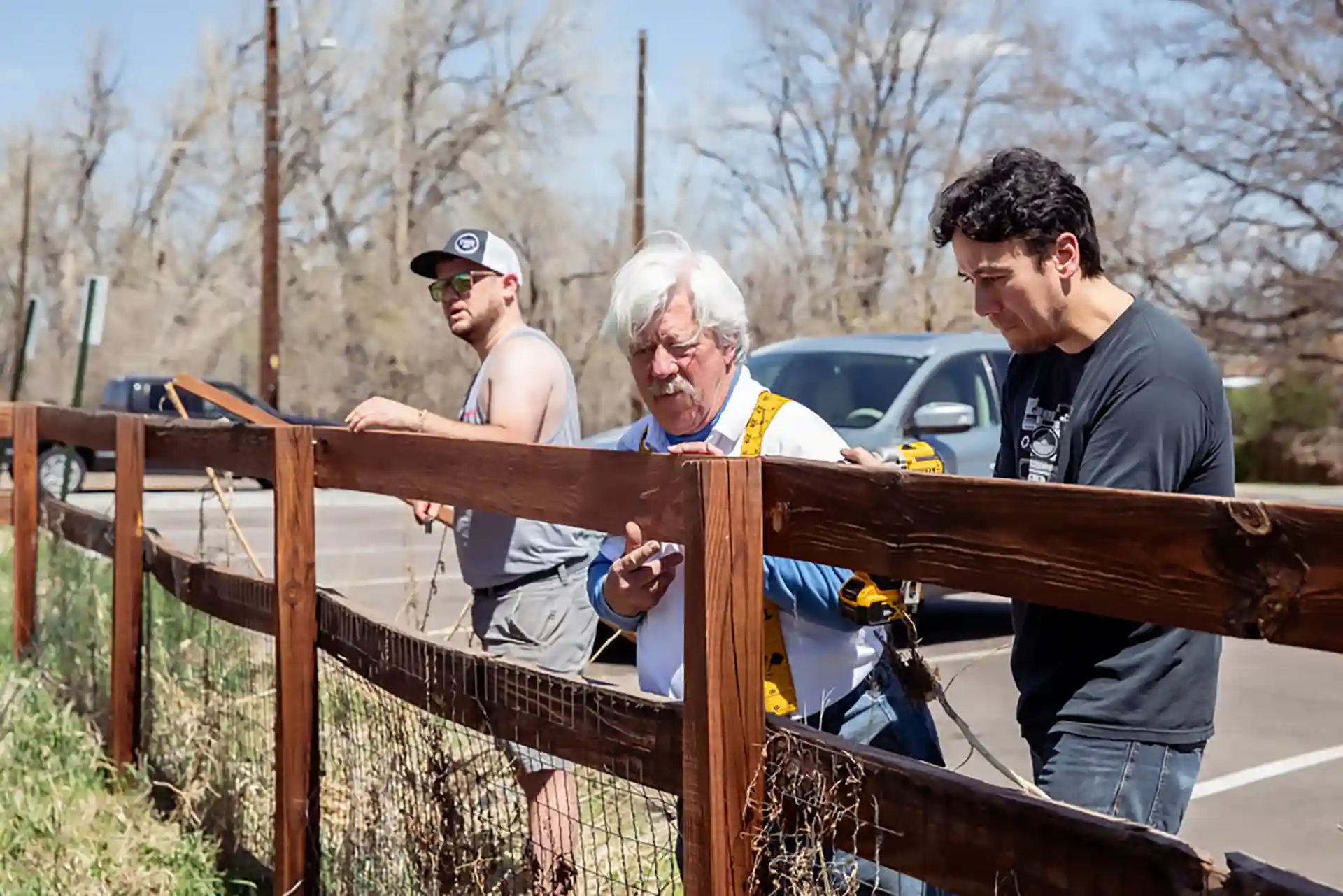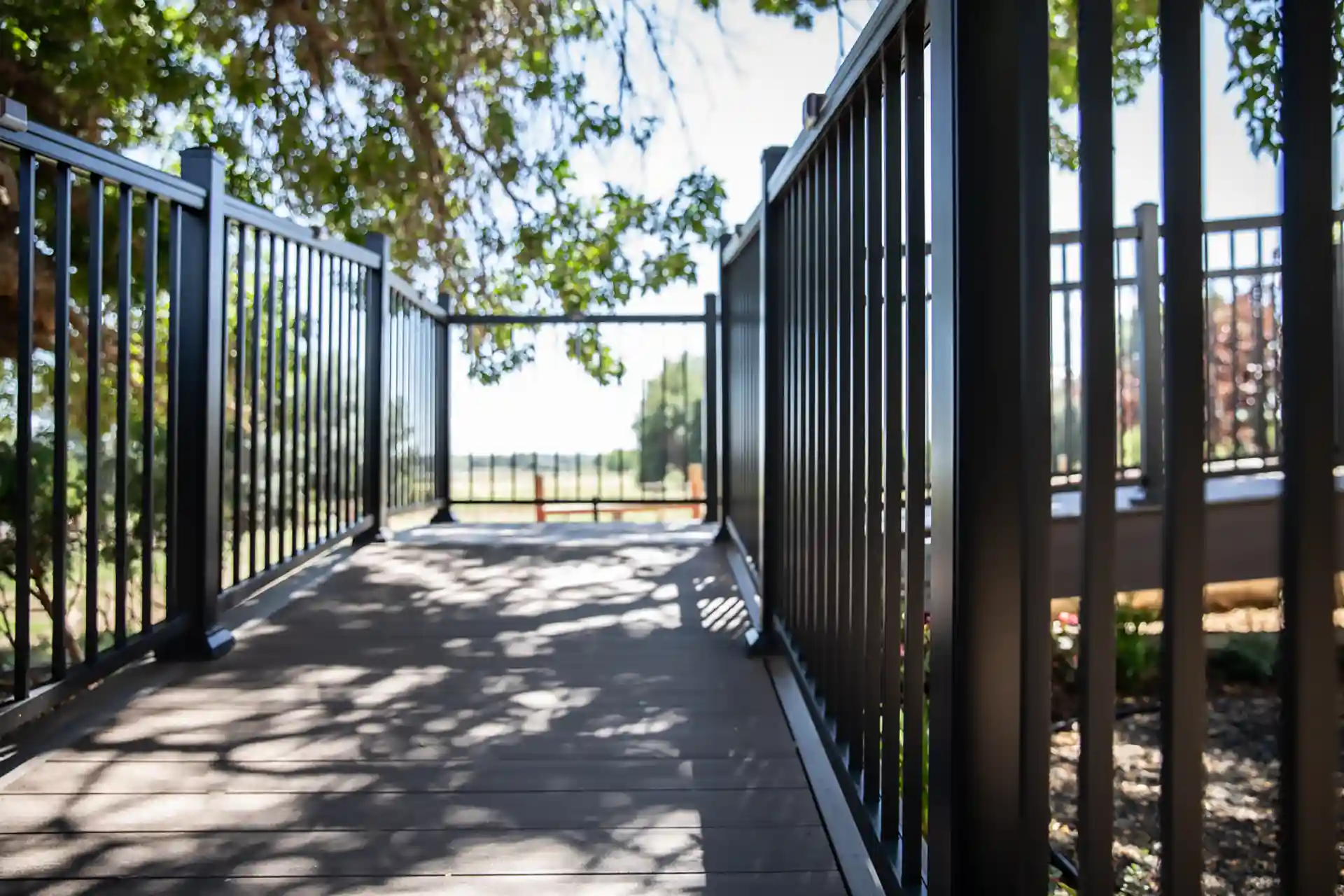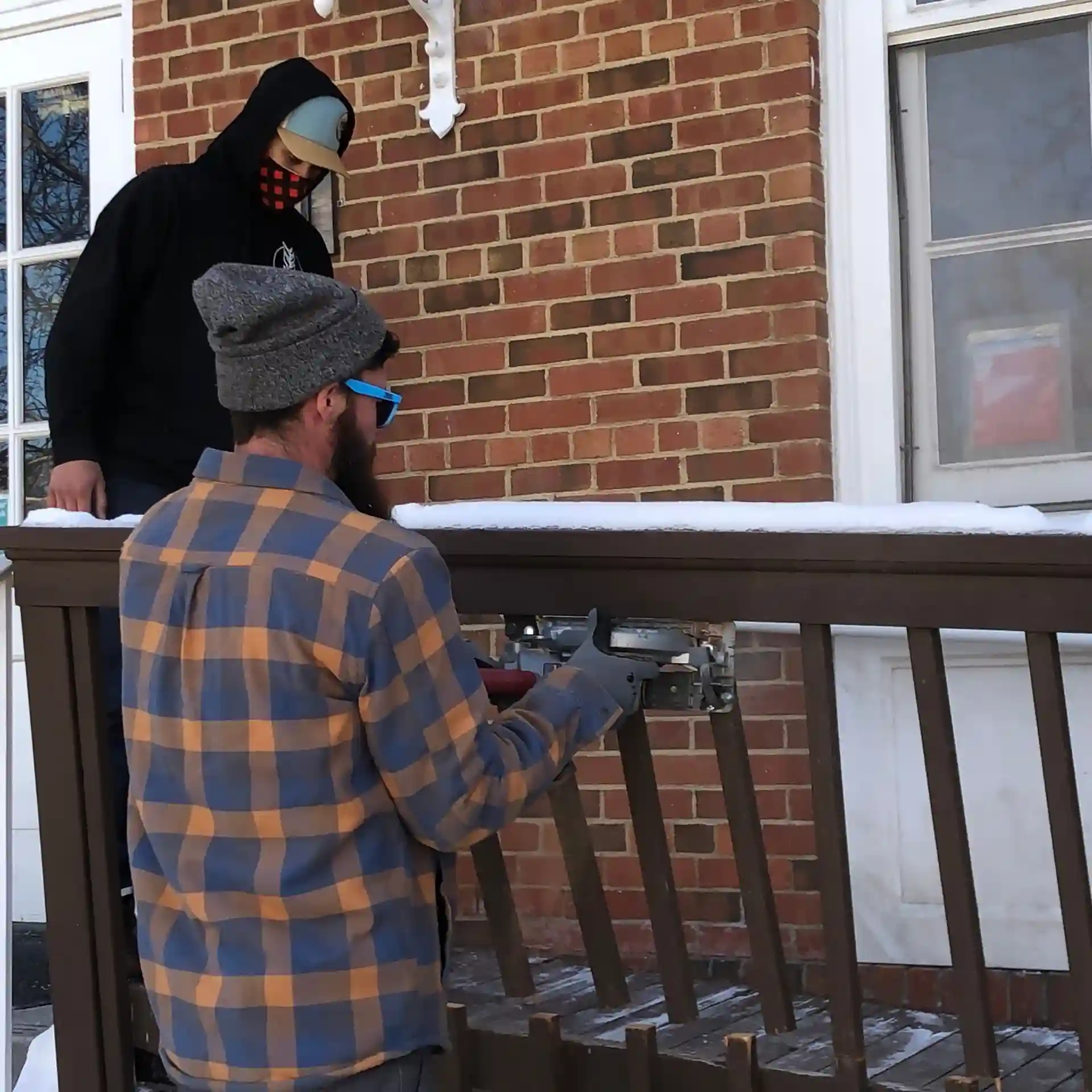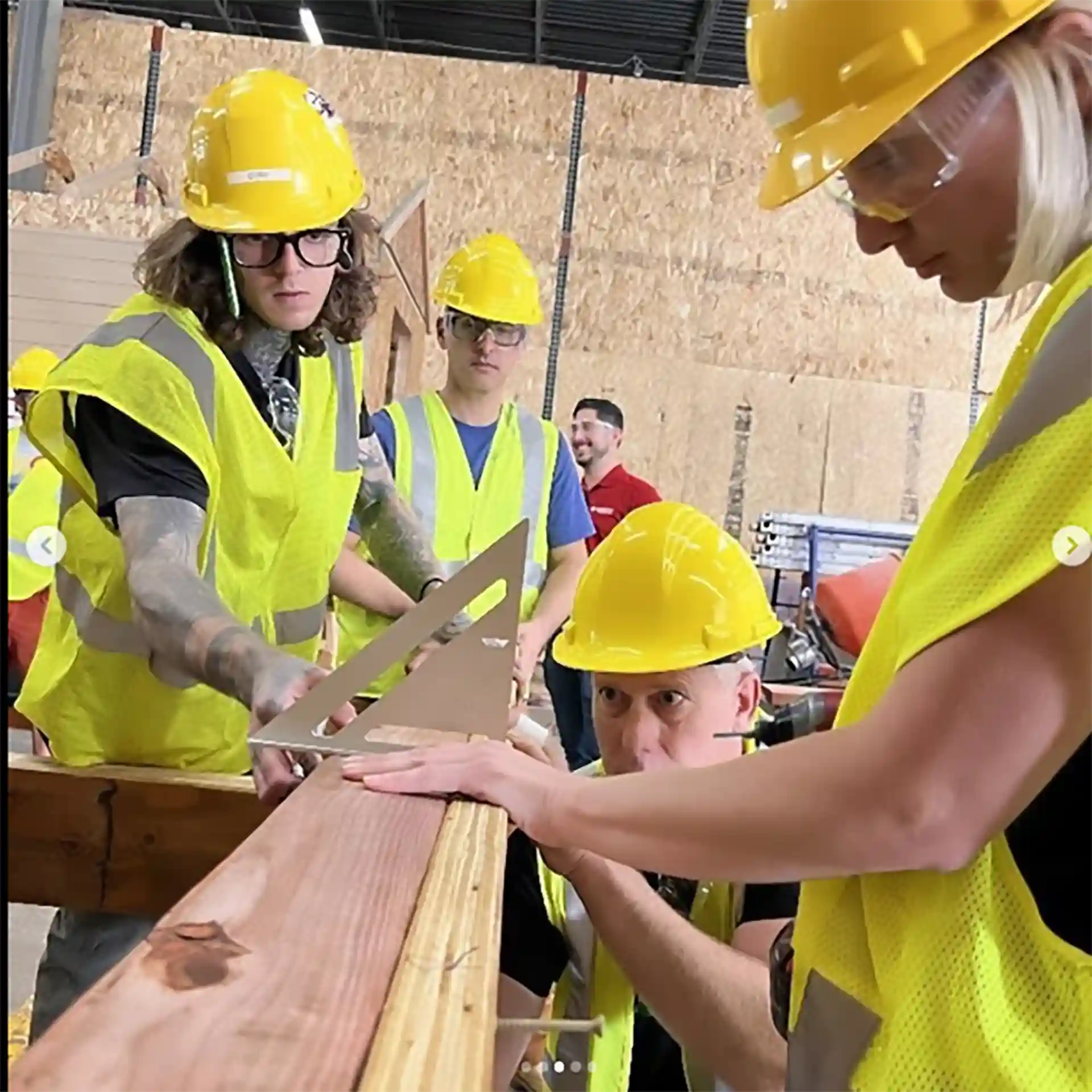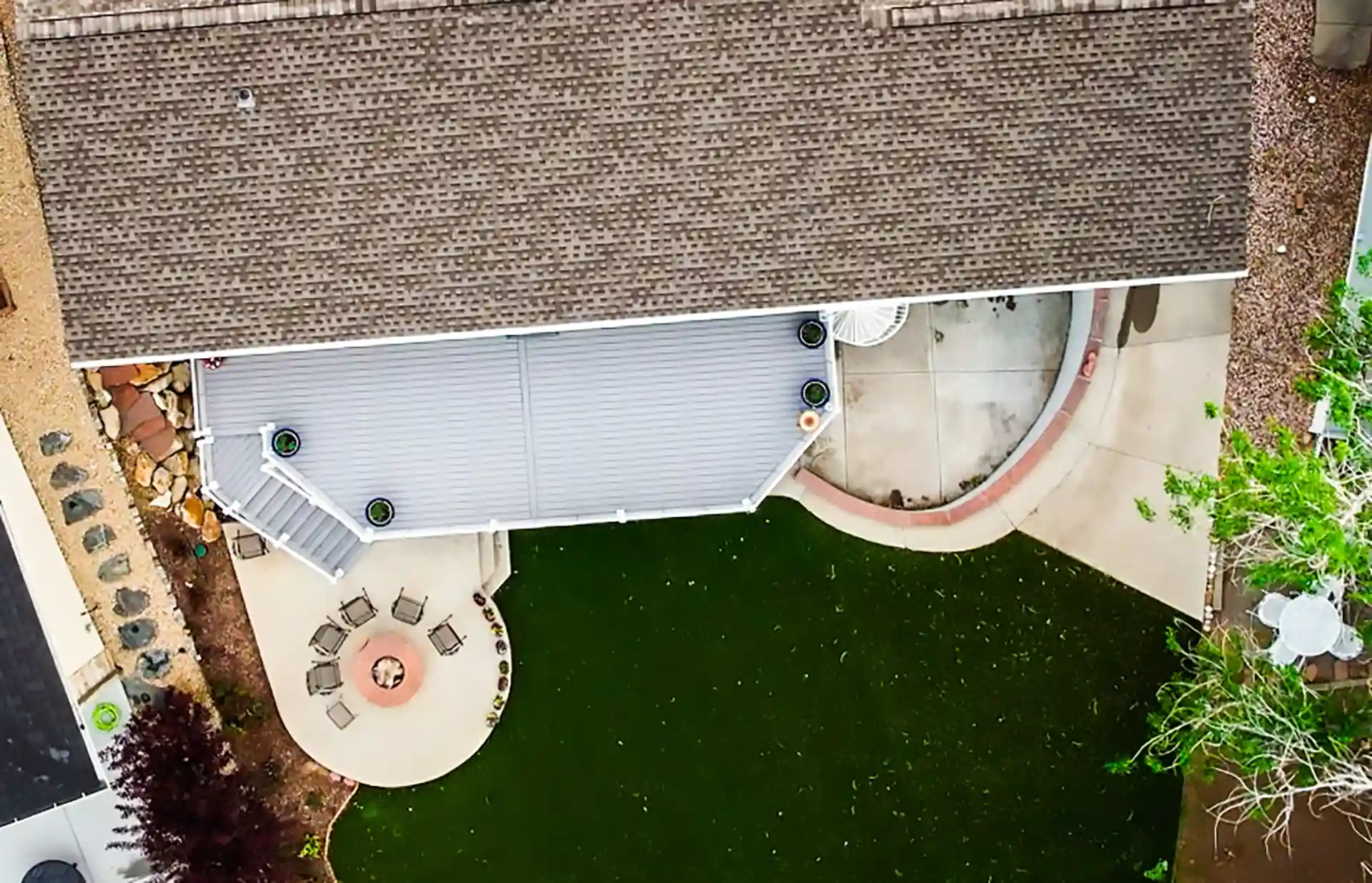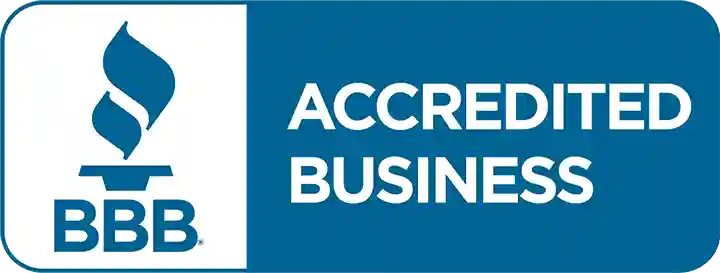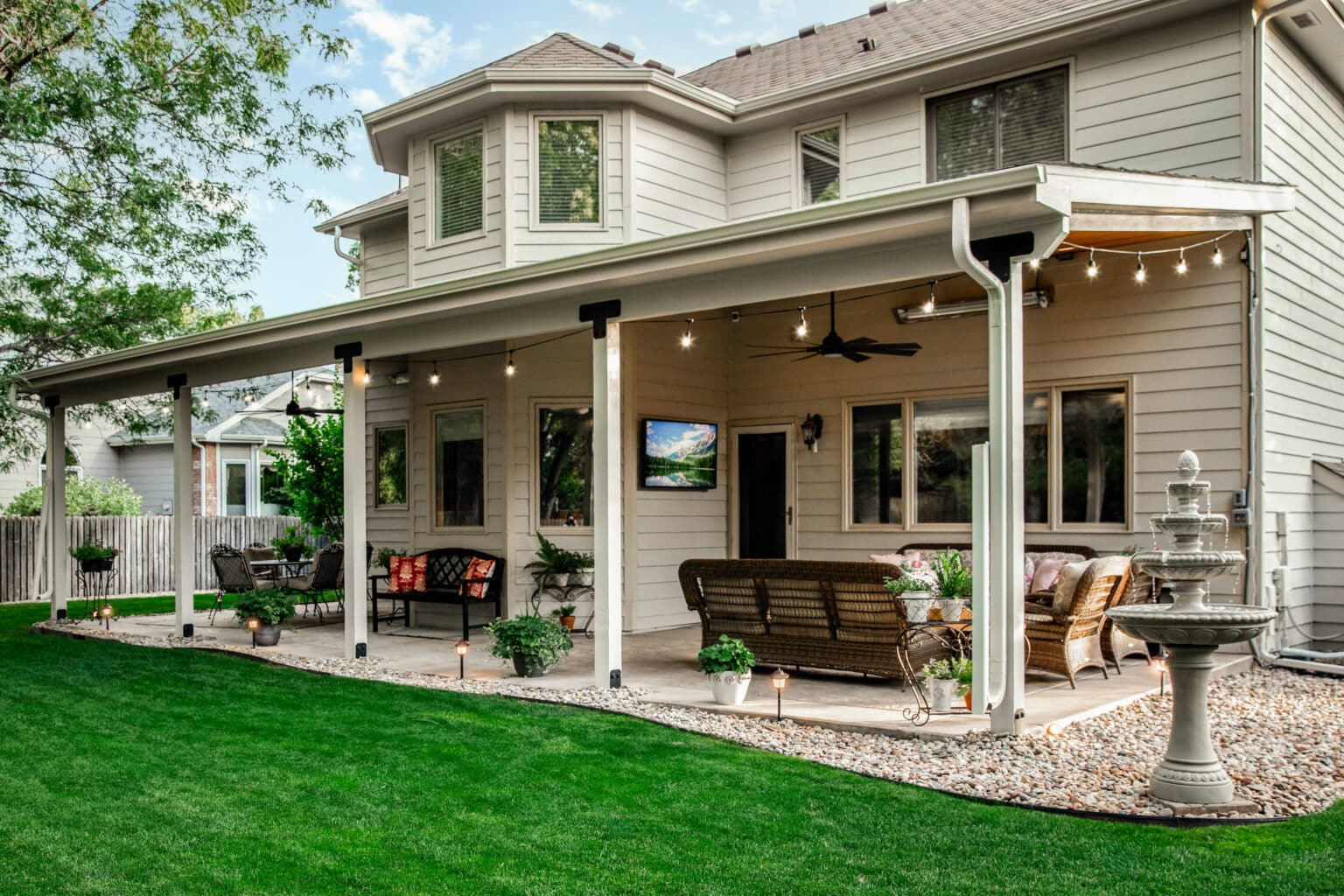Maintaining a deck protects its beauty, structural integrity, and safety over time. Greenwood Village’s seasonal temperature fluctuations, high-altitude UV exposure, and moisture from snow present specific challenges to decks constructed with wood, hardwoods like IPE, or composite materials.
A carefully maintained deck reduces the risk of costly structural repairs and preserves its visual appeal for years. This guide covers the fundamentals and technical nuances to empower homeowners with actionable knowledge.
Why Should You Maintain Your Deck
Outdoor decks face ongoing mechanical, chemical, and environmental stresses that degrade materials over time. Regular maintenance preserves structural soundness, prevents moisture buildup, and maintains surface integrity, reducing risks like rot, loose fasteners, and surface deterioration.
Frequent upkeep ensures safety and helps avoid costly repairs, supporting deck longevity and appearance without repeating specific climate conditions.
Low-Maintenance Decks
Modern low-maintenance decks leverage engineered materials and hardwoods designed for resilience in demanding climates. Greenwood Village homeowners benefit from choosing materials with inherent weather resistance, minimizing upkeep without sacrificing durability.
Composite Decking
Composite decking consists of a wood-fiber and plastic polymer blend encapsulated with a protective cap layer, engineered for performance:
- UV-Resistant Caps: Prevent color fading and surface oxidation.
- Moisture Barriers: Composite boards resist water absorption, reducing rot and mold risk.
- Insect and Fungal Resistance: Plastic components deter termite and fungal infestations common to untreated wood.
- Thermal Stability: Capped composites expand less than traditional wood, preserving fastener tightness.
Brands like Trex and TimberTech lead the industry with proprietary polymer blends and caps engineered to withstand extreme sun, freeze-thaw, and moisture exposure prevalent in Colorado.
IPE Hardwood Decking
IPE (Brazilian Walnut) is a dense, oily hardwood prized for its exceptional hardness, natural oils, and decay resistance. IPE requires specific maintenance:
- Oil Treatment: Specialized penetrating oil replenishes natural oils stripped by sun exposure, preventing surface checking and color loss.
- Minimal Moisture Absorption: Dense grain and high silica content reduce water uptake, limiting rot and warping.
- Mechanical Fastening: Requires stainless steel or coated fasteners to resist corrosion due to the wood’s tannins.
Periodic oiling every 6–12 months is critical to maintain IPE’s deep brown color and prevent surface cracks from environmental drying.
Seasonal Deck Maintenance Tips for Greenwood Village
Each season presents unique care tasks to maintain deck condition and function:
- Spring: Remove debris and clean surfaces. Inspect and tighten fasteners and railings. Reseal or restain wood decks as needed. Pay close attention to freeze-thaw damage from winter—inspect and repair cracks promptly.
- Summer: Rinse frequently to remove dirt and pollen. Apply UV-protective coatings to combat intense Colorado sun exposure and dry conditions. Check hardware for loosening.
- Fall: Clear leaves promptly to avoid mold. Deep clean surfaces and apply sealants. Reinforce railings and stairs. Remove leaf buildup quickly to prevent mold growth favored by cooler, damp conditions.
- Winter: Remove snow promptly with plastic shovels or brooms. Rinse off salts and de-icing chemicals that can accelerate corrosion and surface damage. Use sand for traction instead of salt, which can damage the finish.
These targeted actions protect your deck year-round without re-explaining climate causes already detailed separately.
Pro Tip: Leverage Local Expertise for Complex Deck Care
Greenwood Village’s climate challenges require precision in cleaning methods, timing, and material treatments. O’Keefe Built’s local experience ensures that maintenance tasks address both visible issues and hidden risks, helping preserve your deck’s safety and longevity.
For nuanced questions or hands-on support, consider consulting professionals who understand the specific demands of Colorado’s environment and decking materials.
Regular Deck Maintenance vs Annual Deck Maintenance
A strategic maintenance schedule prevents the compounding of minor issues that lead to costly repairs:
| Maintenance Type | Purpose | Typical Tasks | Frequency |
| Regular Maintenance | Prevent surface buildup and minor wear | Sweep debris every two weeks during spring and summer; rinse monthly or after storms; spot clean spills immediately. | Every 1–2 months |
| Annual Maintenance | Preserve structural integrity and surface | Deep clean with appropriate detergents, inspect and repair structural components, reseal/oil wood decks every 12–18 months, and oil IPE every 6–12 months. | Once per year, early spring or late fall |
Tools and Materials You Need to Maintain Your Deck
Efficient and safe maintenance requires these tools and materials:
| Tool/Material | Function | Recommended Use |
| Soft-Bristle Brush | Gentle cleaning without damaging surfaces | Weekly sweeping, spot cleaning |
| Garden Hose with Adjustable Nozzle | Controlled rinsing removes dirt and residues | Monthly rinsing, after storms or pollen |
| Low-Pressure Power Washer | Removes deep grime without stripping finishes | Annual deep cleaning, keep PSI under 1500 |
| Composite Deck Cleaner | Formulated to remove stains without harming caps | Twice-yearly cleaning |
| Plastic Putty Knife | Safe debris removal from gaps | Clears between boards without gouging |
| Wood Sealant or Hardwood Oil | Provides UV and moisture protection | Reapply every 12–24 months |
Essential Deck Care Practices for Longevity and Appearance
| Maintenance Aspect | Recommended Actions | Why It Matters |
| Sweep Frequently | During active seasons, remove leaves, dirt, and organic debris at least every two weeks to prevent moisture buildup and staining. | Trapped moisture accelerates wood rot, mold growth, and surface damage. |
| Rinse After Snow or Storms | After snow melts or heavy rain, use a garden hose with moderate pressure to clear salts, dirt, and pollutants. | Residue from salts and debris causes corrosion of hardware and stains surfaces. |
| Use Soft Brushes & pH-Neutral Cleaners | Clean surfaces gently with non-abrasive tools and cleaners formulated for your deck material (wood or composite). | Prevents scratching and degradation of protective finishes or caps. |
| Perform Seasonal Inspections | Check fasteners, railings, boards, and framing at least twice yearly to identify early wear, looseness, or mold. | Early detection prevents structural failures and expensive repairs. |
| Clear Leaves and Dirt Promptly | Remove accumulated debris immediately, especially in fall, to avoid mold and mildew buildup. | Organic matter traps moisture and promotes biological growth. |
| Deep Clean with Appropriate Products | Use wood-safe or composite-specific deck cleaners twice yearly to remove stains, mildew, and embedded grime. | Removes deep stains and biological growth that routine cleaning misses. |
| Apply Stain or Oil as Needed | For wood decks, apply penetrating stains every 12–18 months; for IPE hardwoods, use specialized oils to maintain color and durability. | Protects wood fibers from UV damage, moisture intrusion, and surface drying. |
| Avoid Harsh Chemicals and Excessive Pressure | Do not use bleach or high-pressure washing above 1500 PSI to prevent damage to wood fibers or composite caps. | Harsh treatments can degrade material integrity and void warranties. |
Wood vs Composite Deck Maintenance: Step-by-Step Comparison
| Step | Wood Deck Maintenance | Composite Deck Maintenance |
| 1. Clear the Surface | Remove furniture, plants, leaves, and debris to expose the entire deck. | Sweep or blow away dirt, leaves, and debris. |
| 2. Inspect for Damage | Check for cracks, splinters, rot, loose fasteners, and signs of insect damage. | Inspect for surface staining, scratches, loose fasteners, or gaps. |
| 3. Clean the Deck | Use wood-specific cleaners and soft-bristle brushes to remove mildew and stains. | Use composite-safe cleaners and a soft brush or cloth for stubborn spots. |
| 4. Rinse Thoroughly | Rinse with a garden hose or low-pressure washer (max 1500 PSI). | Rinse with a garden hose; avoid high pressure that can damage the cap. |
| 5. Drying Time | Allow 24-48 hours drying before treatments to ensure proper adhesion. | Drying is not always necessary before regular cleaning; follow product guidelines. |
| 6. Apply Treatments | Apply penetrating stain for cedar and softwoods; use specialized hardwood oil for IPE. | No stain or oil needed; use manufacturer-recommended protectants if applicable. |
| 7. Maintenance Frequency | Depending on exposure and wear, reapply stains or oil every 12-24 months. | Deep clean twice yearly; inspect fasteners every 6 months. |
| 8. Hardware Check | Regularly tighten and replace corroded nails, screws, and bolts. | Check and tighten hidden fasteners and connectors biannually. |
Stain, Oil, Rinse, and Surface Treatment
- Wood Deck Staining:
Use a semi-transparent stain with UV protection and water repellents specifically for cedar or pressure-treated wood. Apply only when the wood is dry and temperatures are between 50°F and 90°F. Avoid solid stains that trap moisture. Use a brush or roller for even coverage and to prevent pooling. - IPE and Hardwood Oiling:
Apply specialized penetrating hardwood oil thinly to maintain color and prevent cracking. If surface checking is visible before oiling, lightly sand the deck with fine-grit sandpaper. Avoid over-application to prevent a sticky residue. - Rinsing Procedure:
To avoid damage, rinse decks with a garden hose using a wide spray nozzle. If pressure washing, keep pressure below 1,200 PSI for composite decks and under 1,500 PSI for wood decks. Hold the nozzle at least 12 inches away and spray along the wood grain. Always rinse immediately after applying any cleaners to remove residue. - Composite Deck Care:
Do not stain or oil composite decks. Use only manufacturer-approved composite cleaners. Avoid bleach, ammonia, or solvents that can damage the protective cap or void warranties.
Do’s and Don’ts of Smart Deck Maintenance
Do’s:
- Sweep and rinse every 1–2 weeks during active seasons like spring and summer to prevent moisture buildup, staining, and mold growth.
- Use pH-neutral, composite-safe cleaners formulated for your decking material to protect wood fibers and composite caps.
- Inspect ledger boards, fasteners, and railings annually to catch early signs of rot, corrosion, or loosening that can compromise deck safety.
- Protect nearby landscaping and surfaces during staining or oiling by using drop cloths and plant saucers to avoid accidental damage or staining.
- Use plastic or rubber cleaning tools to avoid gouging or scratching deck surfaces, especially on composite decking.
- Follow manufacturer guidelines for all maintenance products and treatments to maintain warranty coverage and optimal performance.
- Schedule professional inspections before and after extreme weather seasons to promptly address potential freeze-thaw damage or summer UV effects.
Don’ts:
- Avoid chlorine bleach and harsh chemical cleaners that degrade protective coatings and damage wood fibers or composite layers.
- Do not use power washers exceeding 1,500 PSI; excessive pressure can raise wood grain, cause splintering, and erode composite caps.
- Never paint or stain composite decking—this can cause peeling, void warranties, and permanently damage the surface.
- Don’t allow organic debris to accumulate, especially in shaded or damp areas, as it promotes mold growth and accelerates rot.
- Avoid dragging heavy furniture, grills, or planters across the deck, which can scratch or dent decking surfaces.
- Don’t apply sealant or oil to wet decks; this traps moisture and prevents proper adhesion, leading to peeling and decay.
DIY Deck Inspections
Safety studies show that many deck accidents stem from overlooked structural elements like ledger boards, fasteners, and railings. Focusing attention on these areas during inspections helps prevent hazards and costly repairs.
| Area | What to Look For | Inspection Frequency |
| Surface Boards | Cracks, splinters, mold, discoloration | Every 3 months |
| Fasteners | Rust, loose or missing screws/nails | Every 6 months |
| Railings/Stairs | Stability, loose bolts, signs of wear | Every 6 months |
| Support Framing | Rot, sagging, and insect damage | Annually |
Practical tips include checking tight corners with a flashlight, gently testing railing stability, walking the deck for soft spots, and inspecting ledger boards and joists for moisture damage.
When to Call O’Keefe Built for Professional Deck Maintenance
Professional inspections catch hidden problems like damaged ledger boards, corroded hardware, and electrical issues that can cause deck failures or safety hazards.
O’Keefe Built’s team identifies and fixes these issues, ensuring your deck is safe and durable. Their services include structural repairs, hardware replacement, and maintenance of outdoor features—all backed by strong warranties and expert management.
Did You Know? Deck Safety and Maintenance Insights
According to Consumer Reports and the U.S. Consumer Product Safety Commission (CPSC), regular deck inspections and maintenance are crucial to preventing accidents and prolonging deck life. Key findings include:
- Nearly one-third of all deck collapses are caused by neglected or failing ledger boards—the critical connection between deck and home.
- Over 17,000 emergency room visits annually result from deck-related injuries, often linked to falls from unstable railings or stairs.
- Surface hazards such as splinters, raised nails, and slippery patches contribute to thousands of yearly injuries.
- Proper cleaning and sealing reduce wood decay and surface damage by up to 50%, while composite decks benefit from regular washing to prevent mold and staining.
- Electrical components on decks require routine checks to avoid fire and shock hazards.
Local Climate Considerations for Greenwood Village
Greenwood Village has a semi-arid climate with large temperature swings, intense UV exposure, low humidity, and significant snowfall. These factors directly affect deck maintenance needs:
- Temperature swings cause wood and composite decking to expand and contract, loosening fasteners and stressing boards. Regular inspection and tightening are essential.
- High UV radiation accelerates the fading, drying, and cracking of wood decks. UV-blocking stains or oils must be applied every 1–2 years. Composite decks resist UV better but still need regular cleaning.
- Low humidity dries out wood faster, increasing the risk of surface checking and splintering. Hardwood decks like IPE require periodic oiling to maintain moisture balance.
- Snow accumulation and freeze-thaw cycles force moisture into cracks and fasteners, causing damage. Seal decks before winter and remove snow promptly using plastic shovels or brooms.
- Occasional heavy rain and wind deposit dirt, pollen, and debris that trap moisture and cause mold growth. Sweep and rinse decks regularly, especially after storms or windy conditions.
Adapting maintenance schedules and methods to these conditions extends deck lifespan and prevents premature damage.
FAQs
What is routine deck maintenance?
Routine deck maintenance involves regular tasks such as sweeping away debris, rinsing the surface to remove dirt and pollen, and spot cleaning stains. It also includes periodic fasteners, railings, and boards to identify early signs of wear or damage before they escalate into costly repairs.
What is the best way to preserve a deck?
Preserving a deck requires consistent cleaning, protective surface treatments, and timely repairs. Applying stains or oils tailored to the deck material protects against moisture intrusion and UV damage, while addressing structural issues promptly maintains safety and extends the deck’s lifespan.
How often should I reseal my deck?
Wood decks typically benefit from resealing every 12 to 24 months, depending on sun exposure, local climate, and foot traffic. Composite decks generally do not require resealing due to their durable surface caps, but regular cleaning is essential to maintain appearance.
What is the best treatment for a wood deck?
The optimal treatment depends on the wood species: softwoods like cedar and pressure-treated pine respond well to penetrating oil-based stains that seal and protect fibers. Dense hardwoods such as IPE require specialized penetrating hardwood oils to replenish natural oils and prevent surface cracking and fading.
Should I seal my deck after power washing?
Sealing a wood deck after power washing is advisable, but only once the deck surface has fully dried, typically 24 to 48 hours later. Applying sealant on a damp surface can prevent proper adhesion and trap moisture, potentially causing wood damage. Composite decks do not require sealing after washing.
Should decking be oiled or stained?
Hardwood decks, especially those made from IPE or other tropical hardwoods, benefit from periodic oiling to maintain color and durability. Softwood decks generally require staining to protect against UV rays and moisture. Composite decks should neither be oiled nor stained, as these treatments can damage the cap layer and void manufacturer warranties.
Call to Protect Your Deck Investment with O’Keefe Built in Greenwood Village
O’Keefe Built offers full-service deck maintenance and outdoor living care uniquely suited to Greenwood Village’s climate and lifestyle. From composite and hardwood decks to lighting, fire features, pergolas, and outdoor kitchens, their skilled team provides tailored solutions backed by warranties and financing options. Contact O’Keefe Built today for a free consultation and ensure your outdoor living space remains durable, beautiful, and ready for year-round enjoyment.
Call to Protect Your Deck Investment with O’Keefe Built in Greenwood Village
O’Keefe Built offers full-service deck maintenance and outdoor living care uniquely suited to Greenwood Village’s climate and lifestyle. From composite and hardwood decks to lighting, fire features, pergolas, and outdoor kitchens, their skilled team provides tailored solutions backed by warranties and financing options.
Contact us today and ensure your outdoor living space remains durable, beautiful, and ready for year-round enjoyment.

